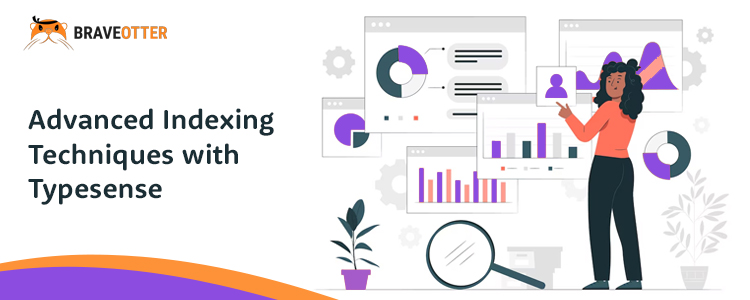Advanced Indexing Techniques with Typesense

To improve search performance using Typesense, an open-source search engine optimized for fast and relevant search experiences, you can leverage advanced indexing and caching techniques tailored to its architecture. Here’s how you can apply these strategies in the context of Typesense:
1. Advanced Indexing Techniques with Typesense
a. Inverted Indexing
- Concept: Typesense utilizes an inverted index as part of its core architecture. This index maps tokens (such as words) to their locations in documents, allowing for rapid retrieval.
- Implementation in Typesense: Typesense automatically creates and manages inverted indexes for your data. You can fine-tune this by configuring tokenization, stemming, and other text processing settings within Typesense’s schema.
- Benefit: Out-of-the-box, Typesense’s inverted indexing ensures quick and efficient search capabilities.
b. Distributed Indexing
- Concept: Typesense supports clustering, where data and indexes are distributed across multiple nodes.
- Implementation in Typesense: By setting up a Typesense cluster, you can distribute your indexes across nodes to handle large datasets and high query volumes.
- Benefit: Distributed indexing in a Typesense cluster improves search performance through parallel processing and load distribution.
c. Prefix Indexing
- Concept: Typesense supports prefix search natively, enabling fast autocomplete and partial word search.
- Implementation in Typesense: When you configure a field in the Typesense schema as searchable, Typesense automatically indexes prefixes, allowing for efficient prefix queries.
- Benefit: This feature is particularly useful for real-time search applications where users expect instant suggestions.
d. Custom Sorting and Faceting
- Concept: Typesense allows you to create custom sorting and faceting indexes to optimize specific query types.
- Implementation in Typesense: You can define custom sort orders and faceted fields in your schema, optimizing these indexes for the most common query patterns.
- Benefit: Custom sorting and faceting reduce query complexity and improve response times for specific use cases.
2. Caching Techniques with Typesense
a. Result Caching
- Concept: Cache the results of frequently executed queries to reduce processing time.
- Implementation in Typesense: While Typesense itself doesn’t offer built-in result caching, you can implement an external caching layer (e.g., using Redis or Memcached) to store and serve frequent queries.
- Benefit: External caching reduces load on the Typesense engine and speeds up the delivery of frequently requested search results.
b. Document Cache
- Concept: Store frequently accessed documents or search results in an in-memory cache.
- Implementation in Typesense: You can integrate an external caching solution at the application level to cache documents retrieved from Typesense.
- Benefit: This approach speeds up access to popular documents without re-querying the Typesense engine.
c. Query-level Caching
- Concept: Cache entire query responses to quickly serve identical queries.
- Implementation in Typesense: By implementing an HTTP cache or using a reverse proxy like Varnish in front of your Typesense instance, you can cache full query responses.
- Benefit: This reduces the need for repeated query processing, especially for static or infrequently changing content.
d. Cache Invalidation Strategies
- Concept: Ensure cached data remains up-to-date by implementing cache invalidation rules.
- Implementation in Typesense: Use time-based expiration (TTL) or event-based invalidation at the application level to keep the cache in sync with Typesense’s real-time updates.
- Benefit: This ensures users receive fresh data while still benefiting from cached performance gains.
3. Hybrid Techniques with Typesense
a. Search Query Optimization
- Concept: Optimize search queries before they are processed by Typesense.
- Implementation in Typesense: Customize Typesense’s search parameters, such as filtering, faceting, and query-by, to streamline query processing.
- Benefit: Optimized queries reduce the load on the search engine and improve response times.
b. Index Pruning
- Concept: Regularly remove outdated or irrelevant entries from the index to maintain performance.
- Implementation in Typesense: Utilize Typesense’s API to delete or update documents, ensuring the index remains relevant and performant.
- Benefit: Pruned indexes are leaner, faster, and more efficient.
c. Hierarchical Caching
- Concept: Implement multiple layers of caching for different aspects of the search process.
- Implementation in Typesense: Combine application-level caching, CDN caching, and internal Typesense optimizations to build a robust caching strategy.
- Benefit: Hierarchical caching provides a balanced approach, maximizing performance while maintaining data accuracy.
4. Leveraging Machine Learning with Typesense
a. Learning to Rank (LTR)
- Concept: Use machine learning to optimize search rankings based on user behavior.
- Implementation in Typesense: While Typesense doesn’t natively support LTR, you can preprocess ranking factors using machine learning models before sending queries to Typesense.
- Benefit: LTR enhances relevance by dynamically adjusting search rankings based on learned user preferences.
b. Dynamic Caching with AI
- Concept: Predict and pre-cache popular queries and documents using AI models.
- Implementation in Typesense: Integrate AI-driven cache management with Typesense to dynamically adjust cache contents based on usage patterns.
- Benefit: AI-driven caching improves cache hit rates and overall system efficiency.
We shall discuss the actual implementation of these techniques in the subsequent blogs—just a little wait.

